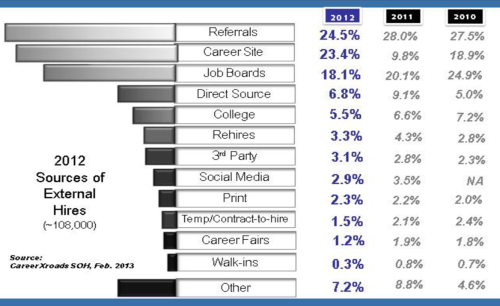
This was originally published in October of 2012. I think it’s still relevant. And I’m on vacation.
Last year the folks at HRxAnalysts published a fascinating psychometric report about HR. Who works in HR; what’s the education level of HR professionals; do they get certifications; do they go to industry trade shows; what industry publications do they read; do they like to be wined and dined. It is a fascinating read. The title of the report is What HR Thinks and Feels: The 2011 HRxAnalysts Psychographic Survey of HR Professionals; The Demographics, Behaviors, Attitudes and Beliefs of HR Professionals.
Without being overly simplistic, the bottoms line is that the average HR professional is a 47 year old white woman with a college degree, two kids, pretty middle-of-the-road politically who isn’t into team sports and likes music.
It’s good and useful information – especially if you want to sell stuff to HR.
However, based on a new survey published in Human Resource Executive, the title really should have been HR is a 47 Year Old White Woman – Unless They’re the CHRO of a Major Employer.
In the September 16, 2012 edition of the magazine, on line here, the editors published the yearly list of HR’s Elite: the 50 highest paid HR executives “culled from a universe of about 227 former and current HR executives at Russell 3000 companies who were among the five most highly compensated officers in their companies and were, therefore, included in those organizations’ filings.”
Ten of the 50 top compensated CHROs were women. Ten. That’s 20%. And that’s down from 43% in 2011. Now I’m not assuming that only 20% of all large employers have female CHROs – HRE says its 43% of the nation’s 100 largest employers – but that’s not as high as the 67% as the HRxAnalyst research highlights. Not even close. And I’m pretty sure that the reason more female CHROs don’t show up in the top 50 highest paid HR executives is the still prevalent truth that in general men still make more than women.
The concern to me is that if it is true, as HRxAnalysts published, that 67% of all HR professionals are women, then why aren’t more of them moving into the top job? The hard question is that if 55% of HR Managers are female, and 64% of HR Directors are female, and 69% of HR Vice Presidents are female, then why, practically speaking, are we not seeing those percentages hold true in the top HR jobs?
I get it: HR is a 47 year old white woman. Unless we’re talking the CHRO job. Then, HR is a guy. Interesting, huh?







 The Era of Heightened Care and Diligence
The Era of Heightened Care and Diligence























